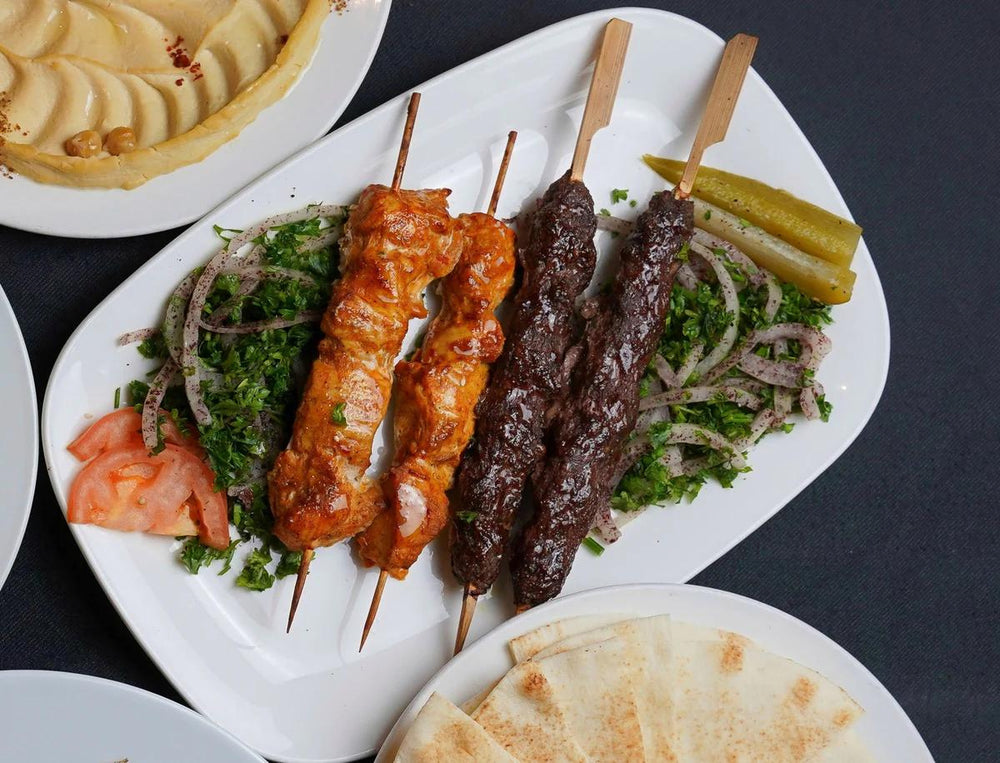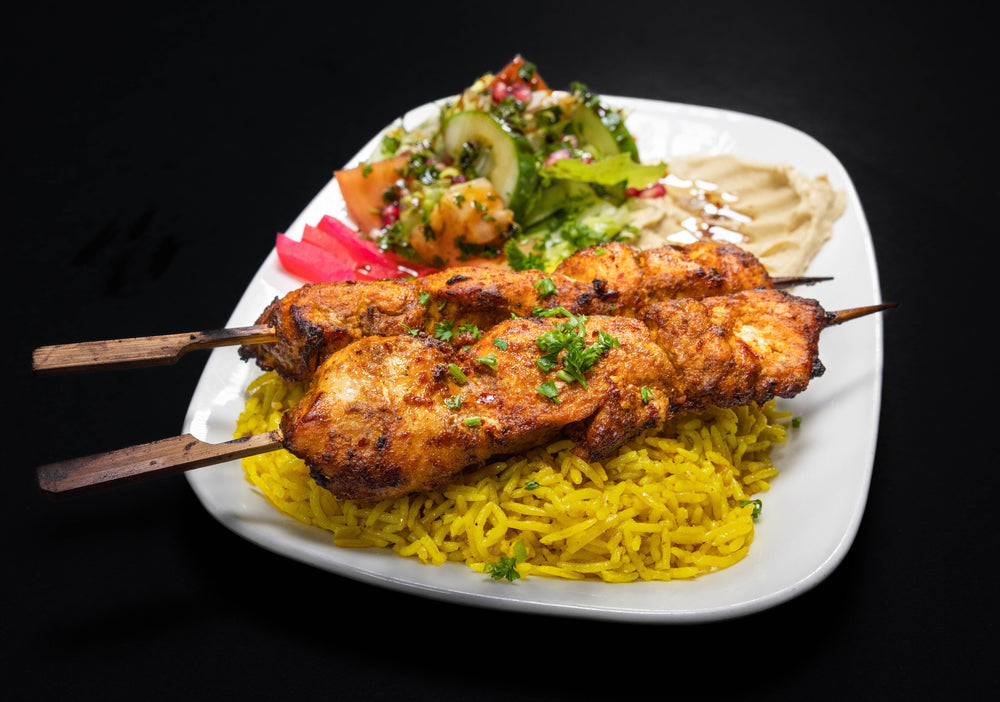Everything about the Rich Flavors and Traditions of Syrian Cuisine: A Culinary Journey
Syrian cuisine uses a special mix of tastes and practices that reflect its rich social background. With staple active ingredients like olive oil and garlic, along with a range of flavors, the recipes are both varied and welcoming. From the detailed prep work of kibbeh to the wonderful allure of baklava, each facet of this cooking landscape discloses deeper tales. As one discovers the significance of these flavors, a greater understanding of communal eating and celebration emerges.
The Essence of Syrian Active Ingredients
The significance of Syrian ingredients depends on their abundant diversity and ingrained social importance. Influenced by the nation's diverse geography and history, Syrian food includes a vast selection of seasonings, natural herbs, and fresh fruit and vegetables. Staples such as olive oil, garlic, and lemon offer a structure, while flavors like cumin, coriander, and sumac add deepness and intricacy to dishes.The use fresh natural herbs, consisting of parsley and mint, highlights the value of seasonal active ingredients. In addition, the area's abundant soil yields a wealth of vegetables and fruits, such as eggplants, pomegranates, and tomatoes, which are indispensable to numerous dishes. Grains like bulgur and rice develop the base of numerous dishes, highlighting the significance of these components in Syrian culture. This mix of tastes reflects not just a cooking custom yet also a tapestry of historic influences, making Syrian ingredients essential to comprehending its food's dynamic personality.

Iconic Dishes of Syrian Cuisine
Syrian cuisine is renowned for its renowned recipes that showcase a rich tapestry of textures and tastes. Conventional meze plates provide a range of little meals that entice the taste buds, while hearty main dishes offer gratifying centerpieces for dishes (Afternoon Tea Vancouver). To complete the experience, an option of savory treats includes a sweet note to the culinary trip
Typical Meze Plates

Hearty Key Courses
Hearty primary programs act as the centerpiece of Syrian eating, showcasing a blend of flavors that reflect the nation's rich culinary traditions. Meals such as kebab hindi, including seasoned lamb skewers, and the well known mujaddara, a reassuring combination of lentils and rice, highlight using fragrant spices and fresh active ingredients. An additional staple is the renowned kibbeh, made from bulgur wheat and minced meat, commonly offered in different types, including baked, fried, or raw. Furthermore, the tastes of the land come to life in dishes like packed veggies, referred to as mahshi, which are full of rice, meat, and herbs. These main dishes not only please appetite but also inform tales of family members events and social heritage.
Delicious Desserts Option
A delightful selection of treats specifies the pleasant side of Syrian food, offering a tantalizing end to any kind of meal. Among the most renowned confections are baklava, fragile layers of phyllo pastry filled up with nuts and soaked in syrup, and maamoul, shortbread-like cookies usually packed with dates or nuts. Knafeh, a rich treat made from thin noodle-like bread taken in syrup and split with cheese, is a preferred option, specifically during cheery occasions. Furthermore, the aromatic and wonderful rice pudding, referred to as roz bil laban, offers a reassuring coating. These scrumptious desserts not just showcase the region's cooking expertise however additionally reflect the social heritage of Syria, making them valued treats in both homes and restaurants alike.
Typical Cooking Techniques
Although modern-day eases have actually influenced numerous culinary practices, standard food preparation methods stay necessary to Syrian food. These methods often emphasize using fresh, seasonal ingredients and concentrate on sluggish food preparation to create rich flavors. Techniques such as barbecuing, braising, and cooking are widespread, allowing the natural preferences of the components to radiate through.One noteworthy method is the preparation of kibbeh, a meal made from carefully ground meat and bulgur. It calls for competent hand-rolling right into numerous shapes and can be baked, deep-fried, or served raw. In addition, the art of making bread, particularly pita, is central to numerous dishes, frequently prepared in a conventional stone oven.Preservation techniques like pickling and fermenting likewise play an essential function, boosting the diversity of tastes located in Syrian meals. These techniques not only reflect the region's agricultural heritage however additionally cultivate a solid sense of neighborhood through shared cooking practices.

The Role of Spices in Flavor
Seasonings act as the heartbeat of Syrian cuisine, instilling meals with complicated flavors and aromatic depth. Each flavor plays a critical role, adding not only to preference but additionally to the cultural heritage of the area. Commonly utilized seasonings consist of coriander, sumac, and cumin, each providing a special profile that boosts standard dishes. Cumin offers heat and earthiness, while sumac includes a tangy brightness, enhancing the total dish.Syrian chefs frequently blend seasonings to create harmonious profiles, mirroring the intricate balance of tastes that define the cuisine. The use of spices is not just for spices; it also offers to protect food and enhance its dietary value. This thoughtful incorporation highlights a deep understanding of the cookeries, where seasonings come to be vital writers, conveying the rich background and diverse influences that characterize Syrian gastronomy. Ultimately, spices are indispensable in crafting unforgettable and genuine Syrian dishes.
Festive customs and celebratory meals
Congratulatory meals in Syrian food are marked by standard feast recipes that mirror the nation's rich culinary heritage. Unique events usually include one-of-a-kind rituals that improve the common experience of dining. These customizeds not just honor the significance of the occasions however also enhance cultural and familial bonds.
Typical Feast Dishes
When households gather to celebrate significant events in Syria, conventional feast dishes take center stage, showcasing the rich culinary heritage of the area. These events commonly feature vivid plates of mezze, including hummus, baba ghanoush, and tabbouleh, which act as delightful beginners. The main dish usually highlights lamb or chicken, marinated and prepared to excellence, frequently accompanied by great smelling rice pilaf or bulgur. Among the most beloved dishes is maqlooba, a split rice dish with veggies and meat, turned upside down prior to offering. Sweets likewise play an essential duty, with baklava and knafeh using a wonderful finish to the dish. Each recipe not only thrills the palate however additionally mirrors the deep-rooted practices and public spirit of Syrian society.
Special Event Routines
Special occasions in Syria are noted by abundant routines that link food and celebration, showing the cultural significance of public celebrations. Commemorative dishes commonly include standard meals such as kibbeh, tabbouleh, and different grilled meats, prepared with care and shared amongst friends and family. Throughout spiritual holidays like Eid al-Fitr and Eid al-Adha, family members collaborated to prepare unique sugary foods like maamoul, signifying unity and delight. Wedding events are specifically elaborate, including several programs and vivid display screens of hospitality. These events are not simply concerning food; they encompass dance, narration, and songs, reinforcing social bonds and social heritage. With these routines, Syrians celebrate life's milestones, guaranteeing practices are given through generations, enriching their cooking landscape.
The Value of Sharing and Neighborhood
Sharing dishes is a fundamental aspect of Syrian culture, mirroring the ingrained values of area and link. In Syria, food is not just nourishment yet a method of bringing people with each other. Good friends and family members gather around the table to appreciate conventional dishes, fostering bonds and producing long lasting reference memories. This common eating experience stresses friendliness, where hosts most likely to wonderful sizes to assure every visitor feels welcomed and nourished.The act of sharing food also represents kindness and solidarity, enhancing social ties within areas and bigger communities. Throughout gatherings, it prevails for individuals to offer each various other, showcasing a spirit of togetherness that transcends individuality. Events, whether tiny or big, are typically noted by the sharing of meals, where diverse tastes and meals collaborated, showing the rich tapestry of Syrian culture. Accordingly, the value of sharing and community in Syrian food is not just a culinary custom but a crucial social technique.
A Culinary Exploration of Syrian Sweets
Frequently overshadowed by savory meals, Syrian sugary foods hold a valued area in the nation's cooking heritage (Afternoon Tea Vancouver). These confections show the area's abundant history, mixing flavors and methods from various cultures. Conventional desserts like baklava, with its layers of phyllo pastry, nuts, and honey syrup, display the artistry associated with Syrian food preparation. Ma'amoul, a shortbread-like cookie loaded with nuts or dates, is often planned for joyful events, representing friendliness and celebration.Another cherished sweet is Knafeh, a pastry taken in syrup and layered with cheese or visit this page cream, providing a fascinating comparison of appearances. Syrians additionally delight in a variety of fruit preserves and syrups, commonly served with tea or as part of a bigger spread during events. These sugary foods not only satisfy the taste but additionally function as a bridge between generations, protecting the customs and tales of Syrian society with each mouth-watering bite
Frequently Asked Concerns
What Are the Wellness Benefits of Typical Syrian Foods?
The health benefits of conventional Syrian foods include rich nutrients from fresh veggies, legumes, and entire grains. These ingredients promote heart wellness, boost digestion, and give important vitamins, adding to general well-being and a balanced diet plan.
Just How Has Syrian Food Developed For Many Years?
Syrian food has actually developed significantly, affected by historical trade paths, cultural exchanges, and local availability of components. Conventional dishes have actually integrated modern tastes and methods while maintaining their rich heritage, mirroring a diverse cooking landscape.
Are There Vegetarian or Vegan Options in Syrian Cuisine?
Syrian cuisine supplies numerous vegetarian and vegan choices, featuring recipes like falafel, tabbouleh, and packed grape leaves. These meals highlight the region's rich agricultural heritage, showcasing fresh veggies, grains, and fragrant flavors in lively mixes.
What Beverages Set Well With Syrian Recipes?
When taking into consideration drinks that enhance Syrian dishes, one may find that mint ayran, tea, and pomegranate juice enhance the meal's tastes. Additionally, merlot usually sets well with the flavors typically located in these cuisines.
Just How Can I Recreate Syrian Meals in the house?
To recreate Syrian meals in the house, one ought to check out authentic recipes, collect conventional active ingredients, and utilize cooking strategies distinct to the cuisine. Try out flavors and discussion also boosts the overall dining experience. Syrian cuisine is renowned for its renowned dishes that display an abundant tapestry of flavors and appearances. Seasonings serve as the heartbeat of Syrian food, infusing meals with complicated tastes and aromatic deepness. Congratulatory dishes in Syrian cuisine are marked by traditional feast recipes that mirror the nation's abundant cooking heritage. Events, whether small or big, are often marked by the sharing of dishes, where diverse flavors and recipes come with each other, get redirected here mirroring the rich tapestry of Syrian culture. Syrian food provides many vegetarian and vegan options, including dishes like falafel, tabbouleh, and packed grape fallen leaves.
Comments on “Syrian Cuisine Staples That Should Be in Every Foodie's Kitchen”